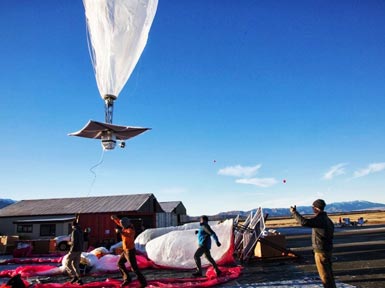Internet for everyone
 Free
Wi Fi and 3G for everyone? This is the ambitious, yet entirely feasible
aim of the Sri Lankan Government. The Government has already set up a
large number of free Wi-Fi hotspots. But this is not enough to cover the
entire island. With almost everyone owning a smartphone, the Internet
should not be the exotic destination it once was. Free
Wi Fi and 3G for everyone? This is the ambitious, yet entirely feasible
aim of the Sri Lankan Government. The Government has already set up a
large number of free Wi-Fi hotspots. But this is not enough to cover the
entire island. With almost everyone owning a smartphone, the Internet
should not be the exotic destination it once was.
Sri Lanka has been at the forefront of mobile technology for decades.
In 1989, it was the first South Asian country to introduce mobile
phones. It was also the first to implement nationwide 3G and 4G
networks, in 2004 and 2013, respectively. Sri Lanka was also one of the
first countries in the region to introduce Internet, around 1993.
Now, Internet coverage in Sri Lankan cities is fairly robust, but it
is lacking in the more rural areas of the country. There are an
estimated 22 million cell phones in use (which actually exceeds the
population), but only 2.8 million mobile internet connections and an
additional 600,000 fixed line internet connections.
Project Loon
Now the Government has teamed up with Google to provide islandwide
Internet coverage and Sri Lanka is among the few pioneering countries
for this project. In 2011, Google began developing Project Loon, an
experimental program to provide free internet access to people in remote
rural areas, using high-altitude balloons floating in the stratosphere.
After test runs in New Zealand, Brazil, and the US, Project Loon is
finally ready to go live.
In 2016, Google will deploy balloons all over Sri Lanka, filling in
its coverage gaps and effectively blanketing the entire island nation
with broadband Internet. In fact, Sri Lanka will become the first
country to formally launch this groundbreaking project. Google's
agreement with Sri Lanka marks the first wide-scale application of the
system, and vaults the small South Asian nation into the internet
history books as a result. It is indeed great that Google has chosen Sri
Lanka as the first country to get Project Loon.
Harsha de Silva, deputy minister of economic development said:
"Hopefully in a few months every person and every device on the island
will be covered by 3G.". Project Loon director Mike Cassidy travelled to
Sri Lanka to finalize the agreement with Prime Minister Ranil
Wickremesinghe.
All 13 helium-filled balloons should be ready by March 2016. They
will be placed in the stratosphere - roughly 19 kilometres up in the
sky, scraping the edge of space. That's about twice as high as the
altitude at which most commercial planes fly. Earthlings can then
connect to the floating balloon network directly from their phones. Each
balloon covers up to 40 km in diameter on the ground.
Operational costs
Unfortunately, the balloons cannot stay up there forever - Google
plans to replace them every 100 days or so. To keep their operational
costs down, local internet service providers will have access to them.
Service providers will be able to access higher speeds and improve the
quality of their existing service once the balloon project is up and
running. We can also expect Internet access prices to come down.
For Google, getting remote populations online is good for business.
The more people connected to the Internet, the more people likely to use
the company's services, including Gmail, search and its YouTube video
site. The race to bring rural regions online has captivated Silicon
Valley, with other high-profile companies - from Facebook to SpaceX -
gunning to spread connectivity using everything from satellites to
drones, not to mention the "good old" submarine cables. Although
relatively small, Sri Lanka has many remote areas where conventional
wired telecom lines cannot reach and in hilly terrains, telecom tower
coverage is usually blocked by mountain ranges.
|

Google internet balloon project loon ap
Pic courtesy: gadgets.ndtv.com |
Having a balloon solution high in the sky will enable easier line of
sight Internet access for subscribers on the ground. There will be no
blind spots with this system. However, it is not yet clear whether
Google is footing the entire bill or whether the Government and/or
telecom companies will share some costs. But there is no doubt that
subscribers, including fishermen hunting for fish around the island,
will benefit immensely. By next year, Google intends to form a
continuous wide ring of Loon coverage that circles the Southern
Hemisphere.
Solar power
One of the interesting technologies included in Project Loon is solar
power. The balloons get their electricity from the sun, which is a great
idea because they fly in the stratosphere above the clouds. Software
moves the balloons up or down to catch wind currents based on their
direction to more or less keep the balloons in one area. At that
altitude, wind speeds can reach 160 Kmph, and the software has to cope
with those speeds and changes in direction in real time. A third
technology used in Project Loon is mesh networking, which sends Internet
packets from balloon to balloon and zaps data to and from homes and
businesses below that have specially built antennas on their roofs.
This is indeed not the first Google project in Sri Lanka. Google
already has a service called Google Free Zone where Google teams up with
telecom companies to subsidise data rates for people accessing Google
services. Through this two-year-old initiative, the company makes deals
with mobile carriers in specific countries and agrees to pay the data
charges of people who use Google search, Gmail or Google+. Google Free
Zone, as announced by Google on Nov. 8, 2012, operates in South Africa,
Sri Lanka, India, Thailand, Nigeria and Kenya. The Google search
homepage is offered in Sinhala and Tamil and Google Translate is also
available for Sinhala and Tamil.
Street View
Earlier, Google's Street View cars mapped Sri Lanka, so we will soon
have highly accurate door to door 3D navigation maps of the entire
country.
This is indeed a big task - Sri Lanka has the 42nd biggest road
network in the world with more than 114,000 Km of motorable roads.
Coupled with broadband beamed from the sky, this will ensure that no
part of Sri Lanka is really remote and cut off from the rest of the
world. |

